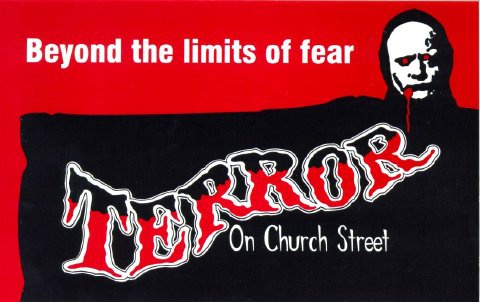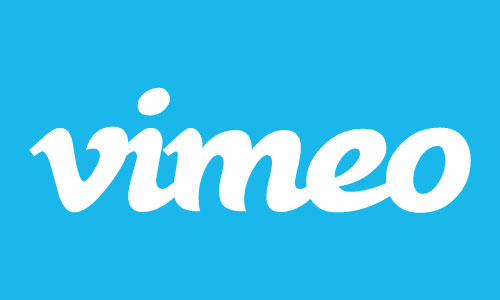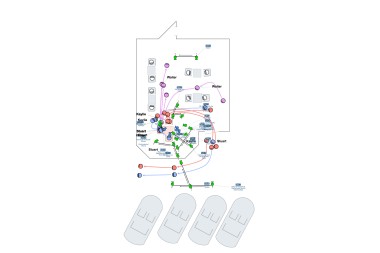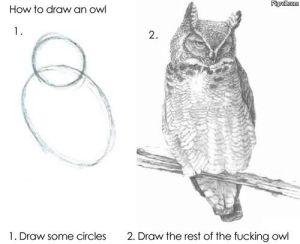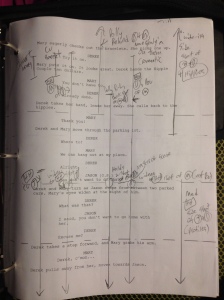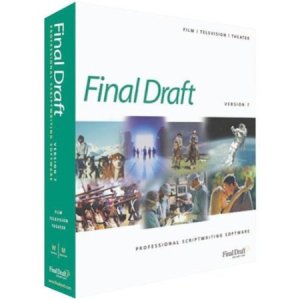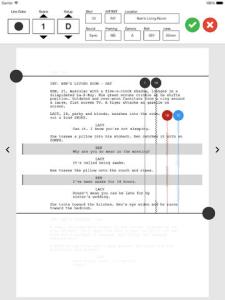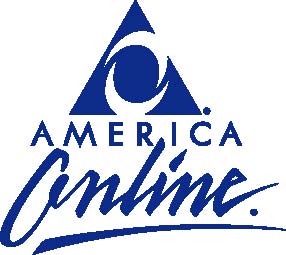Equating a Labor of Love with Actual Labor
I’m writing this while the survival of something close to my heart – the intimate Los Angeles Theater – is being placed in jeopardy. There are many conflicting values under sincere debate and the future of a cultural scene is being brought into question. At the heart of the debate lies a single idea:
How do we value and respect the creative work of others, or of ourselves?
The battle is being fought between two divided camps of a mix of professional actors. One insists that a skill or craft which is unionized is ipso-facto a wage-paying position, and whenever that skill or craft is deployed that it’s strictly a labor issue. The other camp wants a protected union space in which they can hone their craft, and make connections with other professionals, doing work which is more interesting to them than making any specific wage. The stakes of this debate – the union which bargains collectively for stage actors, Actors’ Equity Association, is attempting to change the agreement which small theaters in LA work under, and that change will force the operating expenses for small theaters to increase substantially as they require the stipended actors who work on our stages to be paid minimum wage for all rehearsals and performances.
I should state for the record my bias – I’ve been a member of Sacred Fools Theater (www.sacredfools.org), one of the intimate theaters which will be affected by this change, for six years and have been one of its co-artistic directors for two (although please note: I do not speak for them here). I believe in paying creative people for their work but I also believe that creative people should have a safe room to hone their craft, and I’m concerned that the capitalist impulse of always making money is about to discourage innovation and homogenize a rich and textured cultural scene.
Me for Hire, Me for Free
I was 19 years old when I got my first paid entertainment job – designing, fabricating, and teaching the application of special effects techniques and prosthetics for a full-time horror attraction called “Terror on Church Street” in Downtown Orlando, FL. It was a week of all-nighters (after my day job and college) for which I netted a healthy $200 or thereabouts for a few weeks of work. When it was over, the attraction opened, I was physically and emotionally spent in ways I’d scarcely known before, and I was glad for a valuable resume piece but more happy the experience was over.
That was the first of many such makeup jobs that lasted until I quit doing makeup and focused on directing, a pursuit which is still ongoing. In the course of that time, I’ve been lucky enough to work professionally in film and theater in a multitude of positions. Sometimes for pay (both good and not-so-good), sometimes for free, sometimes in that netherworld between the two which I mentioned before, a stipend.
Over time I got used to what it was like to be a freelancer in an entertainment pursuit: we bring our skill-set, experience, and (on the best gigs) taste to the table in order to help someone else achieve his or her goals – and those goals are frequently economic. Sometimes I’m lucky and my creative goals line up with those of the people hiring me and work gets to feel like play for a while. Sometimes my personal opinions about things aren’t of interest to the employer. Sometimes the process of creating a film or TV show creates unbelievable amounts of gray-hair-and-ulcer-inducing stress that I wish I’d chosen something more predictable and boring to do with my life. But that feeling never lasts after the job is over.
And when the professional work has gotten me down, I’ve consistently had an outlet in place that grounds me, reminds me why I love all of these forms of storytelling.
Intimate theater.
Intimate theater is a place where all of the creative crafts have a unique opportunity to come together and stretch. Risk. Even fail. When one fails and there’s big money on the line, companies go bankrupt. Heads roll. In the creative fields, our work needs to be honed, our crafts challenged.
Because we want to practice our crafts, exploitation runs rampant among producers who want to make money and lower expenses. So, as in every profession, unions emerge to allow for collective bargaining and to make sure that performers’ treatment is held to a proper standard.

The set for my current play, “Occupation.” http://www.sacredfools.org
99 Seats
In Los Angeles, there are a handful of large theaters who do amazing work like the Mark Taper Forum, the Kirk Douglas Theater, the Pasadena Playhouse, and the Geffen. And then there are a handful or less of mid-sized theaters and a universe of small theaters. The designation of “99 seats” stems from a lawsuit decades ago when stage actors sued their own union (Actors Equity Association/AEA) to be able to practice their art on their own time for personal enrichment and one of those small stipends for pay. In addition, they get all the protections of a union including things like turnaround time, restrictions on the number of hours and days they can work in a row, guaranteed breaks, and numerous other things that aren’t guaranteed in nonunion theaters.
And the actors who audition for and appear in these shows, it should be noted, are doing so voluntarily. They are often professionals with impressive credits who are willing to audition for the opportunity to work on these shows. For personal enrichment. To make new connections. Because they like the material. Because even though creating though acting (and writing and directing) is a vocation, most of us got into this line of work because we actually enjoy the process.
And an ecosystem has emerged in LA that, although far from perfect, is a landscape where theater projects ranging from the most commercial to the most experimental can find a home and – if they’re good – an audience. One of the things I love about Sacred Fools is the broad range – from experimental to very commercial – which our company attempts to do and hopefully succeeds at. Shows such as Watson, A Kind of Love Story, and Absolutely Filthy have been born in our late-night Saturday anything-goes show Serial Killers and have ended up on our mainstage, published, touring, and/or winning awards outside of our community. Original show such as Louis and Keeley Live at the Sahara and Stoneface have moved to larger venues and bigger budgets, creating professional jobs for AEA actors as well as directors, designers, stagehands, etc. And Sacred Fools is only one theater in the city. Countless productions have begun at these small houses all over LA and gone on to larger productions, movie deals, on and on.

One of literally hundreds of productions which began life at a 99-seat house and moved up to larger Equity contracts. Would “Stoneface” be worth the risk if it cost $18,000 more than it did?
And to reiterate, these productions are being done by people – often union people – voluntarily and under a contract approved by the union decades ago.
But the new AEA agreement, the one I mentioned before requiring actors to be paid minimum wage, has broad implications. For instance, for 6-8 weeks of rehearsal and a 4-6 week run, each actor would go from being paid a stipend of $7-$15 per show (so around $150 for the full run) to around $2,000. So for example a show with fifteen actors in it begins life at a baseline budget of $30,000 in a town where current waiver budgets tend to sit between $1,500 and $10,000 – and those theaters are generally staffed with all-volunteer (or equally-stipended) craftspeople and designers, and profits are generally funneled into keeping the theaters open – a task which frequently requires almost-constant fundraising to accomplish.
This new agreement is a move which proponents assert will change attitudes which devalue the work of actors, and opponents (of which I number myself one) argue that will break the backs of small theaters across LA, leaving the same number of AEA actors making a living wage but far fewer of them working.
Rising Action
I’m not going to dig into the minutiae of this issue here. I have close friends in both sides of this debate, and there is much written about it. I’m also not going to ascribe cynicism to those who want actors to be paid – I want actors to be paid too, and treated fairly, and given full union protections. What actors do isn’t an easy job and I couldn’t do it. I really want to lay out my non-actorly opinion here as to why I fundamentally disagree with AEA’s position that all creative pursuits – even ones which fall under the rubric of a labor union – aren’t profit-centric pursuits.
Now I’m not a member of AEA, but I am a member of the Directors Guild of America (DGA), and when I work in film, television, commercials, or the internet – basically everything besides stage – my employer must be a signatory. This guarantees all the same workplace and compensation regulations that every other union from the United Auto Workers to The Teamsters would fight for, albeit adjusted for the quirks of the entertainment business.
But a funny thing has happened to the major guilds in the motion picture industry over the last 10 or so years: Digital filmmaking, the rise of online platforms like YouTube and Vimeo and Funnyordie.com. Higher-quality picture and sound in inexpensive gear. And actors, writers, directors, producers, DP’s, art directors, composers, on and on who worked on bigger projects were suddenly able to achieve great results with fewer resources and oddly enough that could lead to more professional work. So the unions created “New Media” agreements so – for instance – my friend Bob DeRosa and I could go create a web series on our own time with our own money without having to spend thousands of dollars upfront to make the project “legit.” It’s an experiment and it could lead to something else or dead end into nothing. So if Bob and I had to pay everyone who was willing to donate a day or two to us a full living wage, we probably wouldn’t bother because we can’t afford to do that.
Working for free has allowed many people I know – and myself – to work on a lot of exciting projects and meet some great people. It has, repeatedly, led to people getting full paid work on many occasions and when I’m casting paid acting positions I often start by bringing in the people I’ve been lucky enough to work with on these “free” projects.
So Does This Really Help Actors?
As I’ve spoken to friends who want to see AEA pass this resolution, I believe it comes down to respect. And obviously paying people is a form of respect.
This is the bottom-line issue in my opinion. Obviously, nobody’s going to turn down more money, especially when they were willing to work for free. But can actors support themselves on minimum wage in LA (currently $9/hour)? Possibly, but not really. Especially when they’d be making minimum wage for no more than 20-24 hours per week on most of the shows I’ve worked on, then maybe another eight to twelve for performance weeks. So, with $216 in their pockets for a week of rehearsals and $108 for performance weeks, actors would still likely need another job in order to survive.
I would prefer to believe that this wage, then, is not designed to break the backs of LA’s intimate theaters, but consider that rehearsals for a 10-member cast would cost a theater $2,160 per week at this rate. So in order to pay for this, theaters would need to radically alter their current fundraising strategies. And given that most of these theaters are staffed with actors (Sacred Fools has a core company of around 140 members, most of whom are actors), this would mean for many a shift from volunteering to act to volunteering to fundraise, step up the grant application process, teach classes, and find other ways to bring money into the theaters. In other words, stop treating them like the creative sandboxes which they currently are, and start treating them like the businesses which they were never meant to be. There seems to be a pervasive belief that there’s money in this kind of theater that’s willfully not being spent on actors, and this assertion is simply not the case. But if it’s even a concern, AEA could require even more transparency with the financials of any of these theaters than it already does. Solutions abound, but AEA is not currently discussing anything but the impending contract – nor did it sit down with LA’s intimate theaters and discuss what might be mutually beneficial.
And if this contract goes into effect, the alternatives for union actors who want to continue in intimate theater – quitting AEA entirely or going Financial Core – would mean that they would be working in the same spaces with zero protections.
I know it’s obvious, but I’ll say this here – the arts aren’t a fixed skill set one takes a class in, then gets a job performing. They’re an evolving set of ever-changing skills, driven by personal taste and what audiences want. Driven by passions, ambitions, impulses, and an itch to tell a story.
Denouement
I would feel differently about this entire issue if this came up from within the ranks of LA’s AEA membership and they went on strike against the 99-seat houses rather than what actually happened: AEA actors marching against their own union’s current leadership.
We joined these theaters because we didn’t want the weight of the professional world and predictable execution on our shoulders every time we undertook a creative process even if we wanted to work with professionals. And with due respect, these theaters exist because, although revivals of “Oklahoma” will always pack in a crowd, many of us share the vision that theater can be a great place to try new ideas and explore creative paths which might not be lined with gold.
Everyone in LA knows that there are plenty of theaters who abuse the current contract, and I would support AEA in cracking down on them. I would support AEA on tweaking the contract in such a way that it steered 99-seat houses down roads that would help them become full professional houses in the next several years.
But if, in trying to course-correct, LA loses a slew of its workhorse small theaters, I believe the quest to respect actors will have robbed our community of one of its richest resources.
